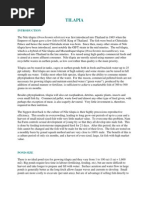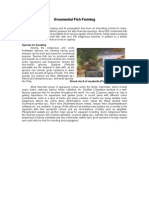0 ratings0% found this document useful (0 votes)
Bahasa Inggris 31 May
Bahasa Inggris 31 May
Uploaded by
bayualifianputraaaCopyright:
© All Rights Reserved
Available Formats
Download as PPTX, PDF, TXT or read online from Scribd
Download as pptx, pdf, or txt
Bahasa Inggris 31 May
Bahasa Inggris 31 May
Uploaded by
bayualifianputraaa0 ratings0% found this document useful (0 votes)
Copyright
© © All Rights Reserved
Available Formats
PPTX, PDF, TXT or read online from Scribd
Share this document
Did you find this document useful?
Is this content inappropriate?
Copyright:
© All Rights Reserved
Available Formats
Download as PPTX, PDF, TXT or read online from Scribd
Download as pptx, pdf, or txt
0 ratings0% found this document useful (0 votes)
Bahasa Inggris 31 May
Bahasa Inggris 31 May
Uploaded by
bayualifianputraaaCopyright:
© All Rights Reserved
Available Formats
Download as PPTX, PDF, TXT or read online from Scribd
Download as pptx, pdf, or txt
You are on page 1/ 8
GROUP NAME
Bayu Alifian Putra
Rayhan
Dionata Februanty
Sendi Ramadhan
CATFISH FARMING
• Introduction
Catfish farming is one of the most popular aquaculture activities in many
countries, including Indonesia. Catfish is known as a freshwater fish that
is easy to maintain and has high economic value. With stable market
demand and high consumption of catfish as a source of animal protein,
catfish farming is a promising option for farmers. Through proper
cultivation techniques, good management, and a deep understanding of
the needs of catfish, farmers can obtain optimal results in their catfish
farming business. In the context of fisheries sector development, catfish
farming also makes a positive contribution in meeting food needs and
creating jobs for the community. With great potential and various
benefits, catfish farming is one of the sectors that should continue to be
developed and improved.
CATFISH FARMING
In Indonesian there are six (6)
types of catfish that can be
developed :
• 1. Clarias batrachus, known as catfish (Java), kalang fish (West Sumatra), death fish
(North Sumatra), and pintet fish (South Kalimantan).
• 2. Clarias teysmani, known as Kembang catfish (West Java), Kalang Putih (Padang).
• 3. Clarias melanoderma, known as thorn fish (South Sumatra), wais (Central Java),
wiru (West Java).
• 4. Clarias nieuhofi, known as leachate fish (Java), limbat (West Sumatra), kaleh
(South Kalimantan).
• 5. Clarias loiacanthus, known as catfish (West Sumatra), Penang fish (East
Kalimantan).
• 6. Clarias gariepinus, known as Dumbo catfish, King catfish, comes from Africa.
Step to starting Catfish Farming
1.prepare land with a minimum area of 12m x 8m
2. make the land into 4 parts, 2 parts 3m x 4m, and two
another section 3m x 5m
3. make a design for a square fence made of bamboo like
the size above is for a tarpaulin (cost IDR 500 thousand)
4. prepare a plastic tarpaulin measuring 5m x 6m = 2 pieces and measuring 5m x 7m = 2 pieces (price 600 thousand)
5. When the tarpaulin is ready, we can fill the tarpaulin with water to a height of 30 cm, let it sit overnight then discard the water.
and we fill the tarpaulin again with water to a height of 30 cm
6. then we can buy catfish seeds, try catfish seeds size 7 - 9 price @Rp. 130 per head (10,000 heads x 130 = 1,300,000
7. buy 8 sacks of pellet feed price @ Rp. 200 thousand (NB: given feed
additions, such as chicken stems, chicken intestines, snails, etc.
8. and within 2-3 months we are ready to harvest, usually the harvest
minimum 600 kg, maximum 900 kg, and average 750 kg, (750 kg x 9,000 = Rp. 6,750,000).
9.Net profit is Rp. 6,750,000 Rp. 2600,000 = Rp. 4,150,000
BUSINESS CONSTRAINTS
• In reality, after cultivating for some time, it turns out that many people fail. Some incidents that often occur
in catfish farming are:
• 1. Many catfish are missing/sick
• 2. Results or tonnage are far from expectations.
• 3. Many losses have been experienced
• If you look at the market prices, it is clear that it is very tempting. 1 kg of catfish can reach IDR 9,000.00. This
is what many cultivators are trapped in wanting to try cultivating catfish. Even though cultivating catfish is
not something they should try.
THANK YOU
https://youtu.be/31tKSF_LaQs?si=RLWKdWLvpN5mu4dI ( Catfish
farming )
https://www.slideshare.net/arief13th
/budidaya-ikan-lele-22694069#goog
le_vignette
(Oleh Arief Wibawa S ( 11161141)
You might also like
- Bisnis Ikan Hias (Ikan Cupang) Dengan Modal Kecil: Sekolah Tinggi Manajemen Informasi Dan KomputerNo ratings yetBisnis Ikan Hias (Ikan Cupang) Dengan Modal Kecil: Sekolah Tinggi Manajemen Informasi Dan Komputer6 pages
- Conducts Survey For The Family's Animal and Fish Raising Project100% (2)Conducts Survey For The Family's Animal and Fish Raising Project10 pages
- How To Start Fish Farming in Nigeria - WealthResultNo ratings yetHow To Start Fish Farming in Nigeria - WealthResult8 pages
- Week 3 Lesson Note On (Uses of Fish and Fish Products and Fishery System in Nigeria) Jss 2 Second Term 2023-24 SessionNo ratings yetWeek 3 Lesson Note On (Uses of Fish and Fish Products and Fishery System in Nigeria) Jss 2 Second Term 2023-24 Session9 pages
- Catfish Farming Information Guide - AgrifarmingNo ratings yetCatfish Farming Information Guide - Agrifarming5 pages
- The Cost of Constructing Each Pond Is As FollowsNo ratings yetThe Cost of Constructing Each Pond Is As Follows5 pages
- Catfish Farming Business Plan BY Aka Peace Otaoghene 18/ENG01/002 IN Chemical Engineering Department FOR GST 212: EnterprenuershipNo ratings yetCatfish Farming Business Plan BY Aka Peace Otaoghene 18/ENG01/002 IN Chemical Engineering Department FOR GST 212: Enterprenuership10 pages
- Market Potential of Ornamental Fishes in Gujarat (Problems & Prospects)No ratings yetMarket Potential of Ornamental Fishes in Gujarat (Problems & Prospects)30 pages
- FishFarming ClassNotes - NG 1723444806386No ratings yetFishFarming ClassNotes - NG 17234448063869 pages
- 1.artificial Breeding of Commercially Important Endemic and Exotic Fishes in HatcheriesNo ratings yet1.artificial Breeding of Commercially Important Endemic and Exotic Fishes in Hatcheries13 pages
- Heliciculture/Heliculture: by MR Adeleye Idowu SamuelNo ratings yetHeliciculture/Heliculture: by MR Adeleye Idowu Samuel27 pages
- Rudimentary Fish Farming Guide For Beginners100% (3)Rudimentary Fish Farming Guide For Beginners46 pages
- Grouper Fish: Nama: Clarita Insabeki Abidondifu Prodi: Manajemen Sumberdaya Perairan Tugas: Bahasa InggrisNo ratings yetGrouper Fish: Nama: Clarita Insabeki Abidondifu Prodi: Manajemen Sumberdaya Perairan Tugas: Bahasa Inggris6 pages
- Commercialization of Fresh Water Fish FarmingNo ratings yetCommercialization of Fresh Water Fish Farming41 pages
- Fish Farming Business Plan and Financial Estimation100% (1)Fish Farming Business Plan and Financial Estimation9 pages
- Practical guide for the breeding of African catfishFrom EverandPractical guide for the breeding of African catfishNo ratings yet
- 89mm Dia Belt Conveyor Impact Idler RollerNo ratings yet89mm Dia Belt Conveyor Impact Idler Roller1 page
- Poter's Five Forces Analysis - Group No 02No ratings yetPoter's Five Forces Analysis - Group No 028 pages
- UPSC IAS Prelims GS - General Studies Question Paper 1995 With AnswersNo ratings yetUPSC IAS Prelims GS - General Studies Question Paper 1995 With Answers47 pages
- Duke Esi/Rm (X) Installation and Operation Manual Duke Part No. 10192 Rev. BNo ratings yetDuke Esi/Rm (X) Installation and Operation Manual Duke Part No. 10192 Rev. B8 pages
- Basic Concepts and Principles in AssessmentNo ratings yetBasic Concepts and Principles in Assessment49 pages
- The 32nd Edition of The Famous Enugu International Trade Fair Is Here With Us As We Have Come Through Another Full CircleNo ratings yetThe 32nd Edition of The Famous Enugu International Trade Fair Is Here With Us As We Have Come Through Another Full Circle12 pages
- Assumptions Underlying Swanson Caring TheoryNo ratings yetAssumptions Underlying Swanson Caring Theory21 pages
- Amorsolo, Fernando C. 1949 Oil On CanvasNo ratings yetAmorsolo, Fernando C. 1949 Oil On Canvas1 page
- The Strategy For Huawei Going Global Huawei's Initial Market Strategy For Entering The European MarketNo ratings yetThe Strategy For Huawei Going Global Huawei's Initial Market Strategy For Entering The European Market7 pages
- Bisnis Ikan Hias (Ikan Cupang) Dengan Modal Kecil: Sekolah Tinggi Manajemen Informasi Dan KomputerBisnis Ikan Hias (Ikan Cupang) Dengan Modal Kecil: Sekolah Tinggi Manajemen Informasi Dan Komputer
- Conducts Survey For The Family's Animal and Fish Raising ProjectConducts Survey For The Family's Animal and Fish Raising Project
- How To Start Fish Farming in Nigeria - WealthResultHow To Start Fish Farming in Nigeria - WealthResult
- Week 3 Lesson Note On (Uses of Fish and Fish Products and Fishery System in Nigeria) Jss 2 Second Term 2023-24 SessionWeek 3 Lesson Note On (Uses of Fish and Fish Products and Fishery System in Nigeria) Jss 2 Second Term 2023-24 Session
- Catfish Farming Business Plan BY Aka Peace Otaoghene 18/ENG01/002 IN Chemical Engineering Department FOR GST 212: EnterprenuershipCatfish Farming Business Plan BY Aka Peace Otaoghene 18/ENG01/002 IN Chemical Engineering Department FOR GST 212: Enterprenuership
- Market Potential of Ornamental Fishes in Gujarat (Problems & Prospects)Market Potential of Ornamental Fishes in Gujarat (Problems & Prospects)
- 1.artificial Breeding of Commercially Important Endemic and Exotic Fishes in Hatcheries1.artificial Breeding of Commercially Important Endemic and Exotic Fishes in Hatcheries
- Heliciculture/Heliculture: by MR Adeleye Idowu SamuelHeliciculture/Heliculture: by MR Adeleye Idowu Samuel
- Grouper Fish: Nama: Clarita Insabeki Abidondifu Prodi: Manajemen Sumberdaya Perairan Tugas: Bahasa InggrisGrouper Fish: Nama: Clarita Insabeki Abidondifu Prodi: Manajemen Sumberdaya Perairan Tugas: Bahasa Inggris
- Fish Farming Business Plan and Financial EstimationFish Farming Business Plan and Financial Estimation
- Goldfish: Goldfish Care and Tips for BeginnersFrom EverandGoldfish: Goldfish Care and Tips for Beginners
- Practical guide for the breeding of African catfishFrom EverandPractical guide for the breeding of African catfish
- UPSC IAS Prelims GS - General Studies Question Paper 1995 With AnswersUPSC IAS Prelims GS - General Studies Question Paper 1995 With Answers
- Duke Esi/Rm (X) Installation and Operation Manual Duke Part No. 10192 Rev. BDuke Esi/Rm (X) Installation and Operation Manual Duke Part No. 10192 Rev. B
- The 32nd Edition of The Famous Enugu International Trade Fair Is Here With Us As We Have Come Through Another Full CircleThe 32nd Edition of The Famous Enugu International Trade Fair Is Here With Us As We Have Come Through Another Full Circle
- The Strategy For Huawei Going Global Huawei's Initial Market Strategy For Entering The European MarketThe Strategy For Huawei Going Global Huawei's Initial Market Strategy For Entering The European Market

























































































